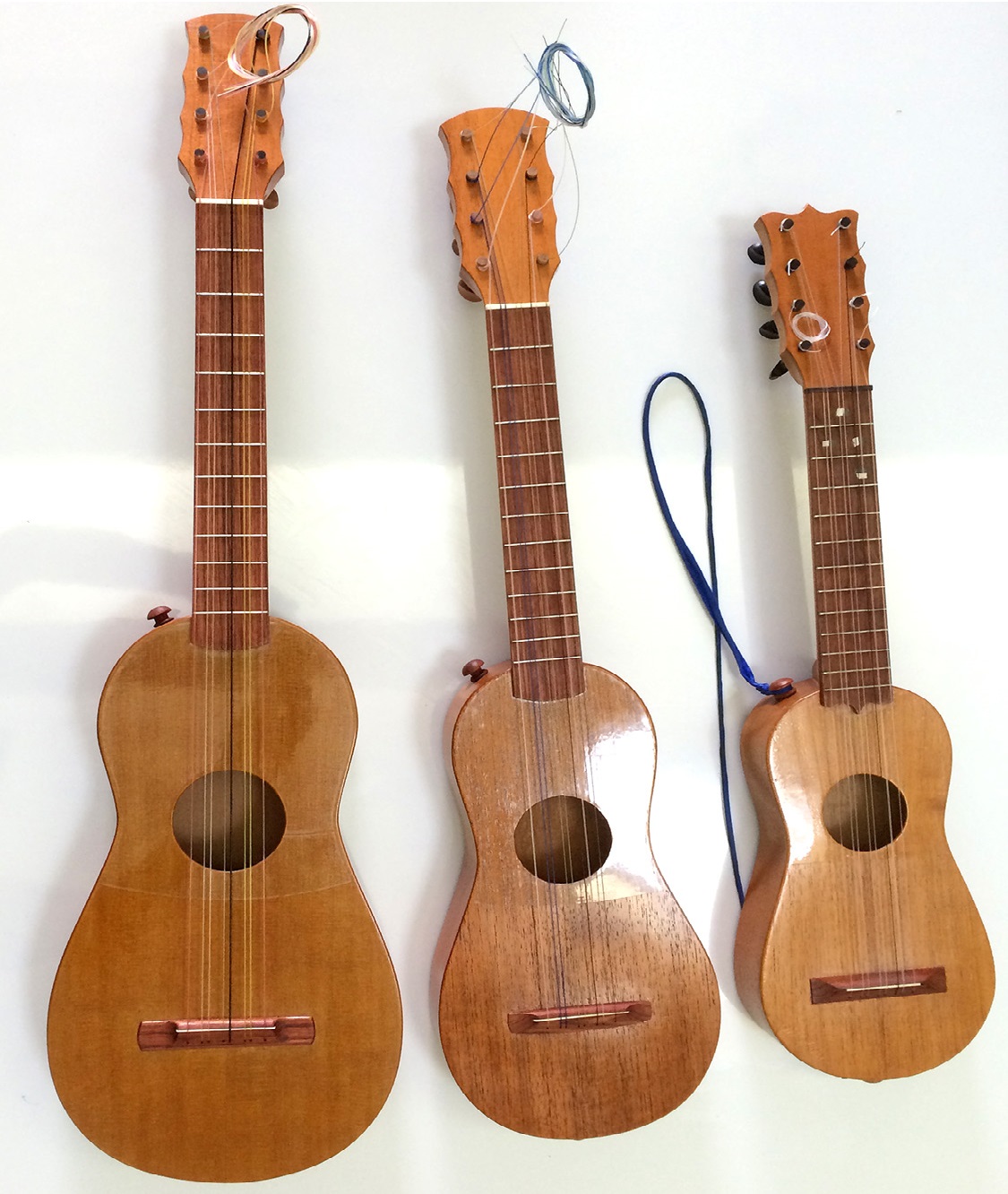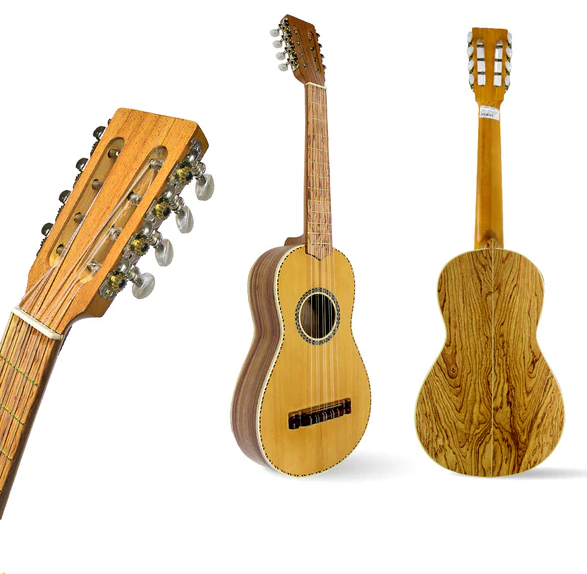Jarana jarocha
Melodic Percussions
America
Between 1001 and 1900 AD
Video
The Jarana Jarocha is a traditional Mexican stringed instrument originating from the state of Veracruz. It plays a fundamental role in Son Jarocho, a vibrant and highly rhythmic folk music genre. With its origins in Spanish and indigenous musical traditions, the jarana embodies a rich cultural heritage and remains a symbol of Veracruz’s artistic identity.
Historical Background
The jarana jarocha originates from North America, specifically Mexico, and dates back to the 16th century during the Spanish colonization of the region. It evolved as a hybrid of Spanish baroque guitars and indigenous musical traditions. Spanish settlers brought instruments like the vihuela and baroque guitar, which blended with local music styles to create new instruments, including the jarana jarocha. This instrument became an essential part of the son jarocho music tradition, a genre that fuses Spanish, African, and indigenous influences, reflecting the multicultural history of Veracruz.
Construction and Variations
The Jarana Jarocha is a small-bodied guitar-like instrument, typically made from a single piece of cedar, mahogany, or other tropical woods. Unlike modern guitars, the jarana is often carved from a solid block of wood, giving it a distinctive resonance and tone.
Body and Soundboard
The body of the jarana is hollowed out from a solid piece of wood, which enhances its acoustic properties. The soundboard, or tapa, is usually made from a thinner piece of wood, often spruce or cedar, to allow for better vibration and sound projection.
Strings and Tuning
The jarana jarocha commonly has five courses of strings, though variations exist with four or even eight courses. The tuning is typically re-entrant, meaning that the strings are not arranged in a straightforward low-to-high pitch order. Some of the most common tunings include:
Standard (G–C–E–A–G)
Alternative (D–G–B–E–D)
Regional variations depending on the style of Son Jarocho played
Variants of the Jarana Jarocha
The instrument comes in various sizes and tonal ranges, including:
Jarana Primera – The smallest variant, producing a higher pitch
Jarana Segunda – Slightly larger with a mid-range sound
Jarana Tercera – The largest and deepest-sounding jarana
Each type of jarana serves a different role in a Son Jarocho ensemble, ensuring a rich harmonic texture in performances.
Playing Techniques and Sound Modifications
Cultural and Musical Significance
Role in Son Jarocho
Son Jarocho is a genre deeply rooted in Veracruz’s mestizo heritage, blending Spanish poetry, African rhythms, and indigenous storytelling. The jarana is the backbone of this tradition, accompanying singers and dancers in lively, improvisational performances.
Connection to Fandango
The fandango is a communal event where musicians, dancers, and singers gather to celebrate Son Jarocho. The jarana provides the rhythmic foundation, allowing for intricate footwork and call-and-response singing. This social aspect has kept the tradition alive for centuries.
Political and Social Influence
Beyond music, the jarana has played a role in social movements and cultural identity. In recent decades, it has been used as a symbol of resistance and heritage preservation, fostering pride in Veracruz’s indigenous and Afro-Mexican roots.
Modern Adaptations and Global Influence
The jarana jarocha, a traditional stringed instrument from Veracruz, Mexico, has undergone various modern adaptations while gaining global recognition. Originally an integral part of son jarocho music, it has been modified in construction and playing techniques to suit contemporary musical contexts. Luthiers have experimented with different woods, string materials, and sizes to enhance its tonal range and durability. Some musicians have even incorporated electric pickups, allowing the jarana jarocha to be used in fusion genres like jazz, rock, and world music.
Internationally, the instrument has found a place in diverse musical collaborations. Artists across Latin America, the United States, and Europe have embraced the jarana jarocha, often blending it with flamenco, reggae, and even hip-hop. Music festivals, workshops, and cultural exchange programs have contributed to its spread, while online platforms and social media have further amplified its reach. Additionally, educational initiatives in music schools outside Mexico are incorporating the jarana jarocha, preserving its traditional essence while encouraging innovation. Through these adaptations and global influences, the jarana jarocha continues to evolve, ensuring its presence in both contemporary and traditional music landscapes.
The Jarana Jarocha is more than a musical instrument—it is a living piece of Mexico’s cultural heritage. From its historical roots to its vibrant role in Son Jarocho, it embodies the spirit of Veracruz. Whether played in traditional fandangos or modern fusion bands, the jarana continues to captivate audiences worldwide, ensuring its legacy for future generations.
FAQ
How is the Jarana Jarocha constructed?
The Jarana Jarocha is carved from a single piece of wood, often cedar or mahogany. It features a hollowed body, a flat back, and a short neck. The instrument typically has five courses of nylon or gut strings. Its construction enhances its percussive and rhythmic sound.
What materials are used in making a Jarana Jarocha?
The instrument is primarily made from tropical hardwoods like cedar, mahogany, or rosewood. The strings are traditionally made from gut but are now often nylon. The frets can be made from wood or metal wire. The soundboard is thin to help project its warm, rhythmic tone.
What are the advantages of playing the Jarana Jarocha?
It is lightweight, portable, and ideal for rhythmic strumming. Its percussive quality enhances traditional Mexican folk music, especially Son Jarocho. The Jarana’s construction allows for rich, resonant tones. It is easy to play in ensembles, making it great for community performances.
 Links
Links
References
- Jarana Jarocha - Wikipedia
- The Jarana Jarocha of Veracruz - Center for World Music
- Jarana Musical Instrument Facts - World of Musicality
- Jarana Jarocha TRADITIONAL Musical INSTRUMENT Played in ... - YouTube
- JJ100 Jarana Jarocha - La Bella Strings
- Jarana Tercera by "Instrumentos Miguel Angel" - JD Salazar Music
Other Instrument
Categories



















